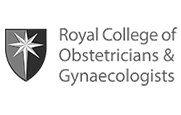Laparoscopic Surgery
What is a laparoscopy?
A laparoscopy is a surgical procedure, commonly known as “keyhole surgery”, that examines the abdominal and pelvic cavities with the use of a long thin telescope called a laparoscope, introduced into the abdomen through a small incision in the umbilicus (belly button). A surgical camera attached to the end the laparoscope relays the images from inside the abdomen to a surgical monitor. Long thin instruments are also introduced into the abdomen through additional small incisions. The size of the incisions are between 5-10mm and typically 3 additional incisions are required. Robotic surgery is the most advanced form of laparoscopic surgery, with improved vision, instrumentation and control through the use of robotic technology.
What are the advantages of laparoscopic surgery?
Laparoscopic surgery has a number of proven advantages including:
- Better vision due to magnified, high definition digital images captured through a surgical telescope
- More delicate surgery from the use of fine instruments
- Less blood loss
- Less internal scar formation (adhesions)
- Smaller incisions compared to a large traditional incision
- Less postoperative pain
- Shorter recovery period with earlier return to work
- Better cosmesis
What operations can be performed via laparoscopy?
With advances in surgical instrumentation and techniques, almost all benign gynaecological surgeries can be safely performed laparoscopically. The level of surgeon training, experience and expertise are important factors contributing to a successful laparoscopic procedure.
Commonly performed robotic / laparoscopic procedures include:
- Robotic / Laparoscopic surgery for ovarian cysts and tubal conditions
- Robotic / Laparoscopic surgery for excision of endometriosis
- Robotic / Laparoscopic Hysterectomy
- Robotic / Laparoscopic Myomectomy (removal of uterine fibroid)
- Robotic / Laparoscopic Prolapse Surgery / Sacrocolpopexy
How do I prepare for a laparoscopic surgery?
In addition to the usual fasting time to reduce the risk of anaesthesia, you may need to undergo a “Bowel Preparation” that clears the bowel. This consists of going onto a liquid diet the day before plus a dose of an aperient. Bowel that has been cleared of its contents will be easier to handle and also result in more working space inside the abdomen. All these can facilitate the surgery and enhance safety. However, there is evidence that bowel preparation may not be necessary and depending on the type of surgery, bowel preparation may be avoided.
How long do I have to stay in the hospital?
The number of days in hospital following a laparoscopic surgery depends on the procedure. Following a typical endometriosis or ovarian surgery, an overnight stay is usually sufficient. However, it is not an uncommon practice for patients to be discharged on the same day of surgery, which is the routine in the American health care system. For more involved surgeries such as a laparoscopic hysterectomy, laparoscopic myomectomy or laparoscopic sacrocolpopexy, the average length of hospital stay is 2 nights.
How long does it take to recover from a laparoscopy?
The time it takes to recover from a robotic or a laparoscopic surgery also depends on the type of procedure that was performed. For a relatively simple procedure such as endometriosis or ovarian surgery, the average recovery period is 1-2 weeks, though there can be individual variation. For a more major surgery such as a laparoscopic hysterectomy, the recovery period is approximately 4 weeks.
Useful Link:
Patient information on Laparoscopy from Royal Australian and New Zealand Collage of Obstetricians and Gynaecologists















